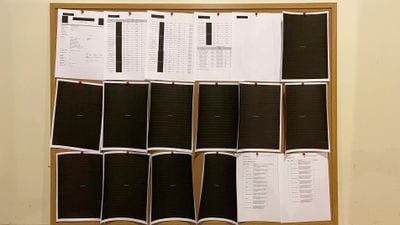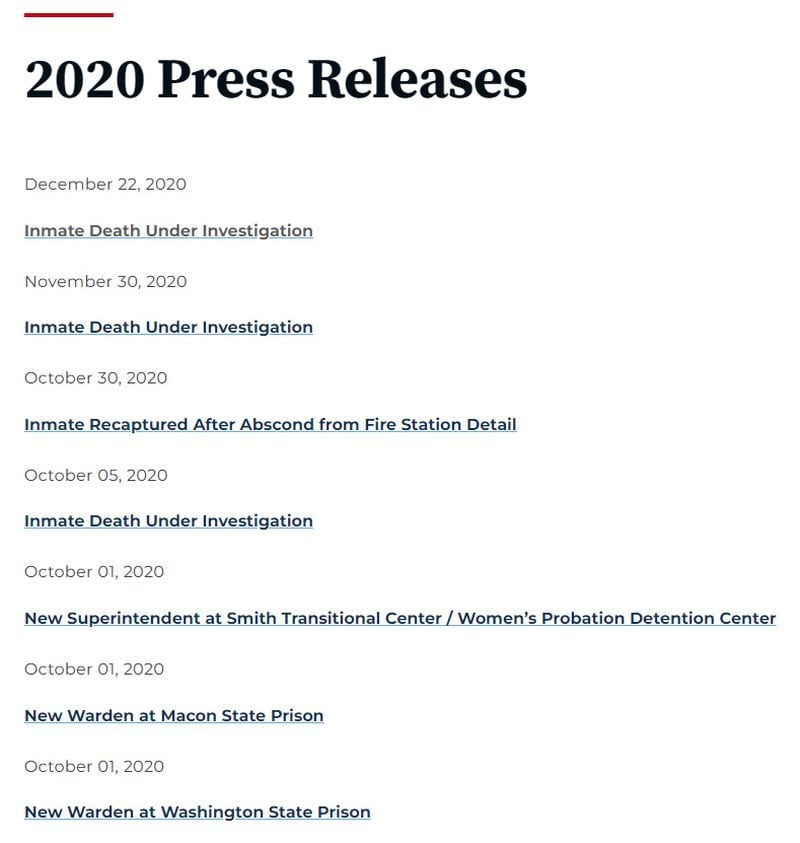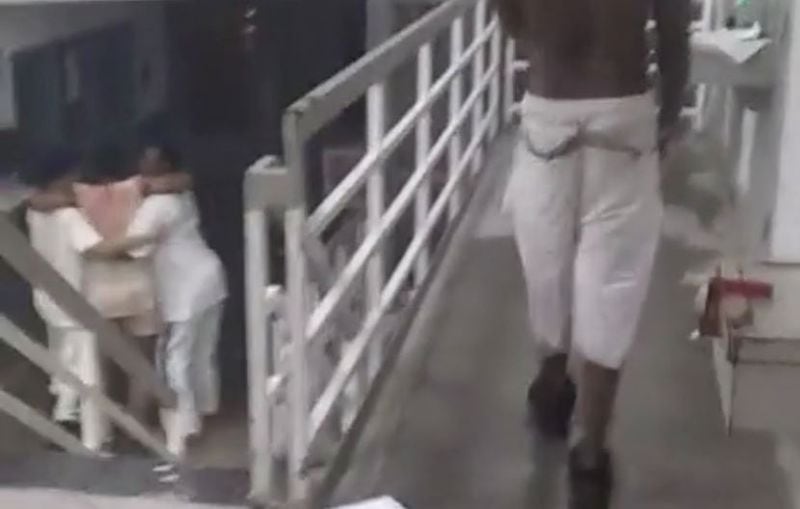Georgia prison system clamps down on information that could expose critical problems
As the Georgia Department of Corrections has seen record numbers of deaths from homicides, suicides and drug overdoses since 2020, it has tightened its grip on information about its prisons.
Two such efforts made headlines. For six months, the GDC fought a subpoena from the U.S. Department of Justice for records related to the government’s investigation of violence in the prison system, saying it would release them only if the federal government signed a nondisclosure agreement. To pry the information from the state, the DOJ had to get an order from a federal judge in June 2022.
Citing security concerns, the GDC also blocked state lawmakers from entering Lee Arrendale State Prison in 2021 as they looked into allegations of inhumane treatment, inadequate medical care and deaths of women incarcerated there. The legislators were told they would have to make arrangements in advance for a tour.
With little notice, state prison officials have also restricted public access to critical information about violence, corruption, escapes and other incidents, an Atlanta Journal-Constitution examination found.
The AJC detailed those findings to the department and asked why transparency has been limited. In response, spokesperson Joan Heath wrote that the GDC had provided countless pages of open records documents to the newspaper. She added that the department disagreed with the assertion that it has become less transparent.
Her statement, however, did not address these specific findings:
Credit: Georgia Department of Correction
• The GDC no longer issues news releases when an inmate’s death is under investigation as a suspected homicide, although that was routine until 2021. From 2021-2023, the department issued only one news release on a prisoner’s death, an apparent suicide in June 2022. Now, the public doesn’t learn of the homicides or suicides unless word gets out from another source and a news organization asks the GDC for information or files Open Records Act requests to obtain mortality reports. GDC news releases are focused on promotions, inmate success stories and initiatives, such as an “enhanced menu option for offender meals.”
• The GDC has a website listing arrests of people in and around its facilities on contraband-related charges. But in 2022, the website listed only civilian arrests, although other records the AJC obtained show 44 officers and other workers were arrested in cases involving cellphones, drugs, cash or other banned items. For 2023, as of mid-November, the website lists the arrest of four workers, but data the AJC obtained shows 38 worker arrests involving contraband, in addition to the arrest of the Smith State Prison warden in connection with a contraband investigation. In contrast, in 2020, the website named 36 officers and other workers arrested on contraband-related charges. In 2021, the website included 24 employee arrests.
• The GDC is often silent when inmates escape and stays mum on how they got out. The GDC website has no news release about the March 6 incident when a man convicted of manslaughter fled a work detail at Baldwin State Prison. The public learned of William Knight’s escape when the Washington County Sheriff’s Office put out an alert. Neither does the GDC website have a news release on an April 5 escape from Johnson State Prison or on an October 2022 escape from Valdosta Transitional Center.
• The GDC releases little if any information on serious incidents in its prisons and, if asked about them, describes them as isolated disturbances or fights. That was the case on Aug. 1, 2020, at Ware State Prison, where malfunctioning doors allowed some inmates to walk out of their rooms. Those prisoners then took two guards hostage, beating and stabbing one, and taking their keys to let out other prisoners. Ultimately, hundreds of inmates ransacked the prison. While the GDC posted a news release describing the incident as a disturbance, GDC records obtained by the AJC paint a different picture. An incident report spreadsheet describes what happened as “inmate to staff assault; injury; taking hostage; escape attempt; disruptive behavior; contraband-hard; disruptive event; shakedown; inmate special transport; fire incident; keys/tools; maintenance incident; property; and use of force.” The data also shows 33 homemade weapons were used inside the grounds, 55 security staff were directly involved, but just 16 offenders were directly involved and disciplined. After the incident, termination data the AJC obtained and confirmed through officer certification records show a mass exodus of employees. In August 2020, 27 employees voluntarily resigned and one was fired. Among those who quit were 21 correctional officers, two lieutenants and one sergeant, some of them long-time employees. The GDC similarly downplayed an incident on July 15, 2023, at Pulaski State Prison, where inmates destroyed building property. The heavily redacted incident report shows 11 inmates were directly involved, using weapons listed as broomsticks, a crowbar, metal spray, shanks and locks. The report adds that chemical spray was used to quell inmates as nine members of the security staff responded. GDC did not issue a news release. GDC also had little to say about a February 2021 incident at Burruss Correctional Training Center, though news reports said gang members rioted and four inmates had to be hospitalized. No news release was issued.
• The GDC will no longer provide videos of incidents within the prisons, which the AJC previously has obtained through Open Record Requests for investigations into prison conditions. One such surveillance video the AJC obtained in 2017 showed officers standing by as a 24-year-old prisoner killed himself in 2014, conflicting with accounts filed by prison officials. In rejecting a 2022 AJC request for video footage, system officials said that videos from GDC facilities are not subject to the Open Records Act for security reasons.
• The department will no longer provide photos of inmates who have died. It told the AJC that, “An offender’s photographs are part of the offender’s institutional or central office file, which is exempt from the Open Records Act unless there is a valid subpoena.”
• State policy requires all GDC-operated facilities and private prisons to document all incidents — including deaths and disruptive events — and report them to its Facilities Division. But the GDC often shields from public view much of the information. Citing a section of state law that exempts from the Open Records Act inmate institutional and central file records as “confidential state secrets,” and sections exempting open investigations and information that could compromise security, the GDC heavily redacted many incident reports obtained by the AJC. Only basic information, such as the location of an incident and the officers involved, is released on those reports, not details on what happened or why. More than three years after the riot at Ware State Prison, the incident report obtained by the AJC had 11 pages completely redacted, marked as open investigation.
Attorney Michele Deitch, who helped draft the American Bar Association’s Standards on the Treatment of Prisoners, said without independent oversight and transparency, you cannot have a safe prison system. “It’s transparency about conditions, it’s data transparency, it’s knowing about deaths in custody. It’s just making what’s happening inside visible to the public.
“Government 101 is that you need transparency in order to have accountability in government.”
Investigative reporters Danny Robbins and Carrie Teegardin and data specialist Jennifer Peebles contributed to this report.


